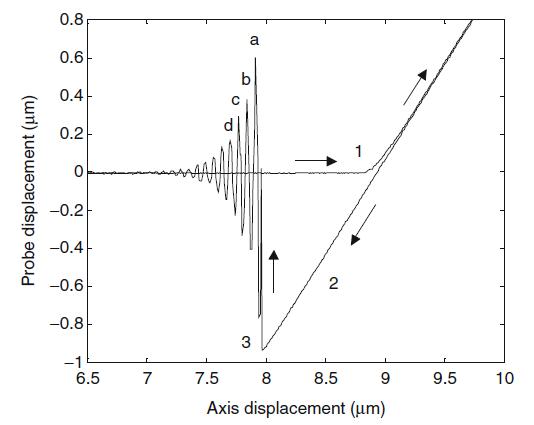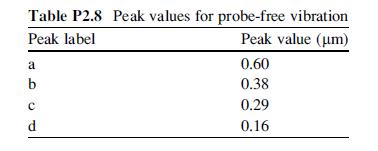The requirement for small features on small parts has led to increased demands on measuring systems. One
Question:
The requirement for small features on small parts has led to increased demands on measuring systems. One approach for determining the size of features (such as a hole's diameter) is to use a probe to touch the surface at several locations (e.g., points on the hole wall) and then use these coordinates to calculate the required dimension. To probe small features, small probes are required. However, at small size and force scales, intermolecular forces can dominate. An example is the interaction between very small, flexible probes and surfaces. As shown in Fig. P2.8, a 72- \(\mu\) m diameter probe tip comes into contact

Fig. P2.8 Probe displacement as a function of the axis position.
with a measurement surface (1) and the probe begins to deflect. The attractive (van der Waals) force between the probe and surface causes the tip to "stick" to the surface as it is retracted after contact (2). The motion is provided by an axis which moves the probe relative to the surface. Once the retraction force on the probe overcomes the attractive force, the probe is released from the surface (3) and it oscillates under free vibration conditions. Given the probe's free vibration response, determine the damping ratio using the logarithmic decrement approach. The peaks from the free vibration response are provided in Table P2.8. (The data in Fig. P2.8 is courtesy of IBS Precision Engineering, Eindhoven, The Netherlands.)

Step by Step Answer:

Mechanical Vibrations Modeling And Measurement
ISBN: 119669
1st Edition
Authors: Tony L. Schmitz , K. Scott Smith





